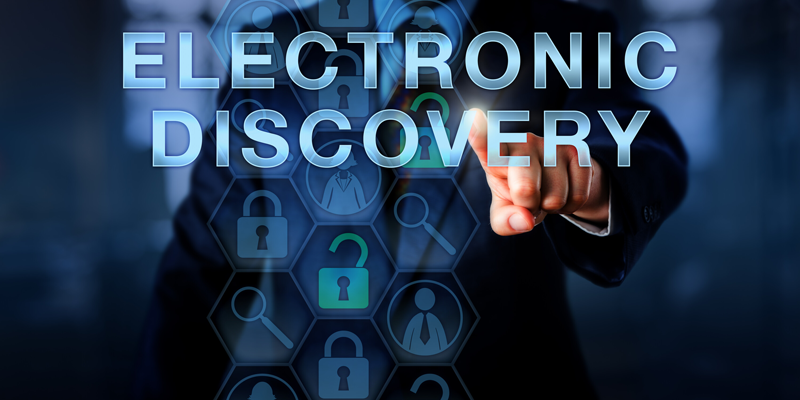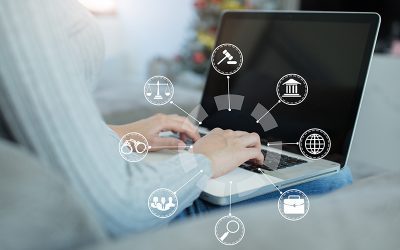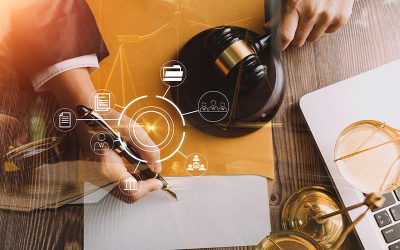Zoom saw a massive growth during the time of COVID- 19 as it facilitated virtual meetings. Many organizations used Zoom to conduct their meetings, classes, and other social interactions. This created huge volumes of audio-visual data, which generated new challenges and considerations for eDiscovery when it comes to obtaining and exchanging evidence in case of any legal case or litigation. With the help of e-Discovery services, legal professionals can review the recordings, extract data and implement the right policies and discovery processes in their organizations.
Remote working and virtual meetings have become popular since the outbreak of COVID-19. Several companies have benefited from virtual meetings facilitated by apps like Zoom. The number of Zoom users increased from 10 million daily users to 300 million in 2019, and 2 trillion in the first half of 2020. With so many meetings, online interactions and audio recordings, if it difficult to find out what exactly happened in case of any issue. The electronically stored information (ESI) includes data from collaboration tools, video conferencing and corresponding chat logs, Instant messaging apps, SMS/text, email, file sharing tools, personal and business devices and social media and messaging platforms within each app. With so much data, the best way to preserve these audio- video recordings is to convert them into transcripts and when it comes to eDiscovery, Zoom transcripts can be really useful.
Significance of eDiscovery for Zoom data
For recording and archiving chats, meetings, and calls, you’ll need a Zoom Pro, Business, or Enterprise account. To use the automatic preservation and transcription features, you’ll need to save recordings to the cloud. If you are admin of these accounts you have access to preservation of data by user, group, or all members in your organization; and control over whether users have the ability to store meeting recordings on their own devices. But if you do not have these capabilities, then Zoom data usage report will be enough.
The Zoom data usage report is essentially a summary of which meetings took place, who was there, the time stamps, and other high-level information. A Zoom data consumption report may provide the “who, where, and when,” but Zoom transcripts, recordings, and chats provide the “what and why.” Therefore, they are critical for conducting comprehensive Zoom eDiscovery.
Types of Data Generated by Zoom Solution
Three types of data generated by Zoom solutions:
- Chat data: Zoom Chat data has been a critical source of ESI in recent years, when combined with data from other apps like Microsoft Teams and Slack. Chat data can be generated via in-conference chats, which normally serves as supporting data for meeting recordings, or directly on Zoom Chats, their instant messaging platform.
- Video recording: Zoom data relies heavily on video recordings of meetings. These A/V files can be incredibly significant pieces of ESI as more and more teams save their recordings on the cloud. Zoom automatically creates both a video and an audio-only file after any recorded meeting. It’s critical to identify which of the two is chosen for review for eDiscovery purposes, because expenses related with file size and accessibility can vary dramatically, with video records often being more expensive to study. When meetings aren’t recorded, usage data reports, which include meeting information such as attendance, meeting date and time, subject, and so on, can be a valuable source of ESI.
- Audio recordings: Audio recordings can be made on other Zoom products, such as Zoom Phone or Zoom Events, in addition to the audio files generated after a recorded Zoom conference.
Reviewing Zoom Data with eDiscovery Tools and Services
There are many eDiscovery tools introducing scalable and specific solutions to review zoom data. This ensures you can search through your meeting recordings the same way you’d search on any other written document. Advanced tools allow you to click on any word or sentence on the transcript, and automatically jump to that section on your A/V file. That way, you can look for relevant keywords and then check out the specific context in which they took place while paying attention to things like the tone, intention, reactions of meeting participants, etc.
Here are some tips to perform eDiscovery using Zoom transcripts:
- Once you have collected all your recordings, you need to transcribe them. You can upload the recording into any of the software and generate transcripts that can be used for reviewing.
- The next step is to limit the number of files that need to be inspected, you can easily prune your data. Consider utilizing date ranges, keywords, meeting participants, and other criteria.
- When it comes to reviewing, the software will assist you in matching your transcript to your recordings so that you don’t miss any important context. Simply click on a segment of the transcript to be directed to that specific point in the recording.
- When looking for possibly relevant material, make sure to use sophisticated search tools. It’s important to remember that transcripts aren’t always perfect—lower audio quality, background noise, and overlapping speakers can all affect transcription accuracy. To combat this, use fuzzier phrases that will hit on several versions of keywords.
- Make homophones a part of your search strategy. If you’re looking for terms that can be transcribed as homophones, such as “logical” instead of “Logikcull,” you’ll want to look for both possibilities.
- Finally, you may use the filter carousel to further refine your search by entering metadata such as recording dates and times, participants, meeting length, and so on.
Legal departments and legal professionals must adapt as the corporate world shifts away from text-based communications. Modern eDiscovery services and tools help to convert such unstructured files into text using automatic transcription and OCR. The legal department can then review the text in the same way as they would an email. It helps to implement a well-thought-out policy that will keep everyone on the same page, making the legal team’s job easier in the event of a lawsuit, and preventing any data management errors.




